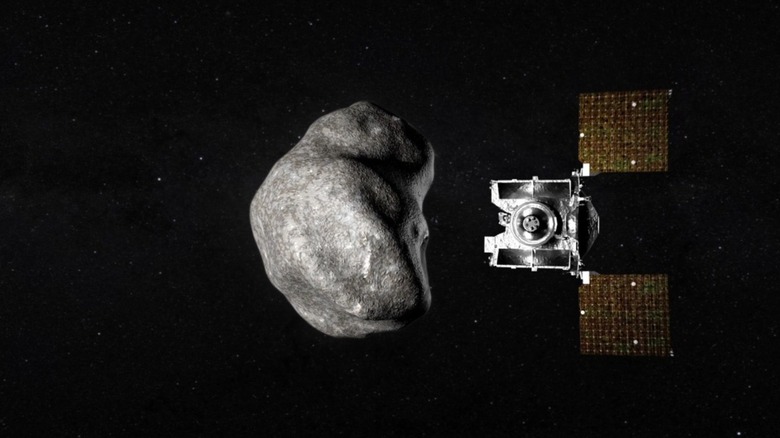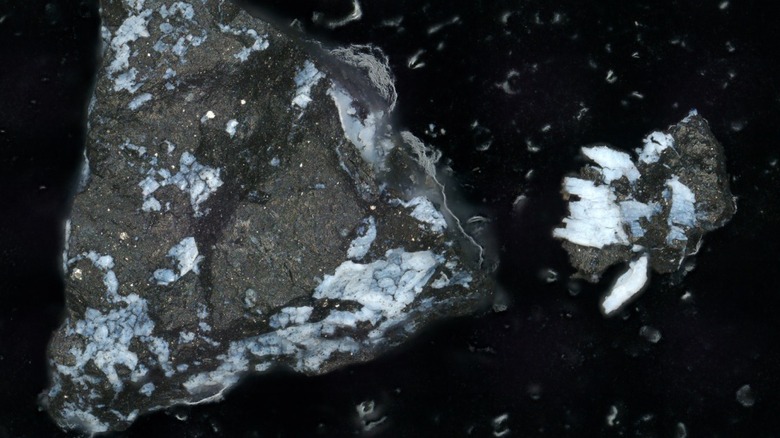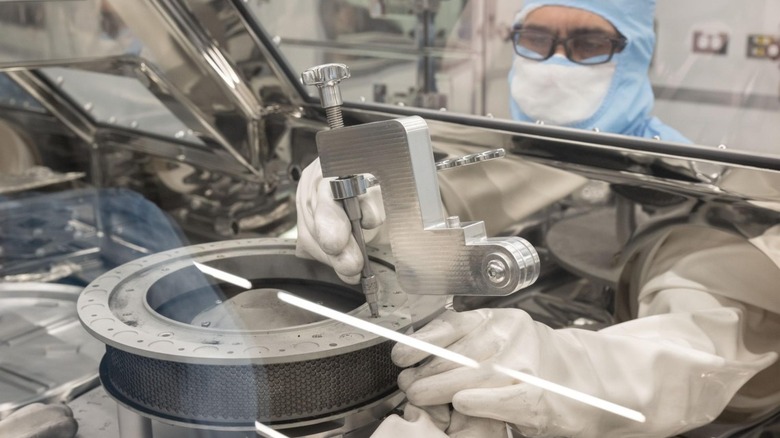NASA Found Something Unexpected In Its First Sample From An Asteroid
After an extremely long journey from asteroid Bennu and a complicated extraction from its canister, NASA is getting exciting data from its first ever sample collected from an asteroid. The OSIRIS-REx mission brought back a sample from the asteroid – which is believed likely to have originally formed in the main asteroid belt between Mars and Jupiter before drifting closer to Earth — and landed it in the Utah desert in 2023. A first look at the sample revealed some intriguing findings, and now further research is uncovering even more information about this piece of a distant solar system body.
Researchers have been carefully analyzing tiny particles of the 4.3 ounce sample, working out what it is composed of and, from that data, revealing information about the asteroid it came from. Studying the sample is not only important to understand the thousands of asteroids with orbits that come near to Earth — it can also help elucidate the early state of the solar system.
That's because many asteroids are pieces left over from when the planets formed, around 4.5 billion years ago. Studying them can show what the early building blocks of planets looked like and how planets formed when the solar system was brand new.
"The Bennu samples are tantalizingly beautiful extraterrestrial rocks," said Harold Connolly of Rowan University, New Jersey, OSIRIS-REx mission sample scientist. "Each week, analysis by the OSIRIS-REx Sample Analysis Team provides new and sometimes surprising findings that are helping place important constraints on the origin and evolution of Earth-like planets."
An unexpected finding
The biggest surprise for the researchers so far has been the composition of the sample. While they found compounds that they expected and hoped to identify, like carbon, nitrogen, and organic compounds, they also found something unexpected: magnesium-sodium phosphate. They had clues of what to expect from the OSIRIS-REx mission, which took readings of the asteroid before picking up its sample, but the spacecraft never found any signs of phosphate, so finding it in the sample was unexpected.
There is another mission which has identified something similar in the past. The Japanese Hayabusa2 brought back the world's first sample from an asteroid named Ryugu in 2020, and that sample did have some similar phosphate. However, the phosphate found at Bennu is of a higher purity and has a different grain size. Identifying this phosphate is important as it mirrors those that can form on Earth when water meets material from the Earth's mantle.
"The presence and state of phosphates, along with other elements and compounds on Bennu, suggest a watery past for the asteroid," said Dante Lauretta of the University of Arizona, principal investigator for OSIRIS-REx. "Bennu potentially could have once been part of a wetter world. Although, this hypothesis requires further investigation."
Looking for the building blocks of life
One of the biggest questions in astronomy today is how did life on Earth develop? A theory, which sounds outlandish but is actually widely accepted as possible by astronomers, is that the building blocks of life could have developed elsewhere in the solar system and then been carried to Earth by an asteroid or comet.
The idea isn't that an asteroid carried a virus or bacteria or anything that was alive. Rather, it could have brought organic molecules containing the amino acids that are required for life to form. The sample from Bennu did contain organic molecules, as well as other important materials for life like carbon and nitrogen.
"These findings underscore the importance of collecting and studying material from asteroids like Bennu — especially low-density material that would typically burn up upon entering Earth's atmosphere," said Lauretta. "This material holds the key to unraveling the intricate processes of solar system formation and the prebiotic chemistry that could have contributed to life emerging on Earth."
Now, the sample will be studied by dozens of labs as tiny portions of the sample are shipped off to facilities across the U.S. and internationally. The researchers are expecting to learn even more about the asteroid soon.
"OSIRIS-REx gave us exactly what we hoped: a large pristine asteroid sample rich in nitrogen and carbon from a formerly wet world," said NASA's Jason Dworkin, OSIRIS-REx project scientist.


